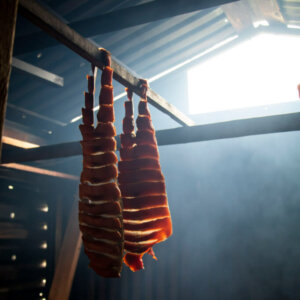By Gale K. Vick, Fairbanks Fish & Game Advisory Committee Member
 In the fight to save our salmon, Tribal members have asked many questions about the differences between hatcheries and fish farms and how those options would impact Wild Salmon in the long run. Definitions matter but when it comes to describing terms in fisheries those definitions can be confusing and sometimes overlapping. In Alaska’s discussion on hatcheries and its historical involvement with them, it is crucial to differentiate between hatcheries and fish farms. While there may be some technical similarities, it’s essential to recognize that one is currently legal under Alaskan law (hatcheries), while the other is not (fish farms).
In the fight to save our salmon, Tribal members have asked many questions about the differences between hatcheries and fish farms and how those options would impact Wild Salmon in the long run. Definitions matter but when it comes to describing terms in fisheries those definitions can be confusing and sometimes overlapping. In Alaska’s discussion on hatcheries and its historical involvement with them, it is crucial to differentiate between hatcheries and fish farms. While there may be some technical similarities, it’s essential to recognize that one is currently legal under Alaskan law (hatcheries), while the other is not (fish farms).
Surprising to many Alaskans, the world salmon market is predominantly (over 70%) non-captured fish (1). This means that much of the world’s salmon do not migrate between fresh and salt water and are not harvested by conventional methods. Instead, they are raised on “fish farms” in ocean pens or in freshwater ponds on land and contained their entire lives to be harvested from these containments.
This is part of the world’s growing marine aquaculture industry. Marine aquaculture is a broad category that refers to the breeding, rearing, and harvesting of aquatic plants and animals. It can take place in the ocean, or on land in tanks and ponds. And it covers many varieties of fish species.
Salmon hatchery fish fall into the general category of “marine aquaculture” because they begin their life in artificial breeding. Some hatchery fish are raised in hatcheries for release into small streams or lakes and intended for sports fishing, known as “stocking.” Some hatchery fish are raised in small systems and released into the wild as a mitigation measure but not meant for harvest. But most hatchery fish are raised in massive production systems meant to produce harvestable surpluses. They are put into pens for growing (fish farms) or released into the wild.
Hatchery salmon released into the wild are anadromous. Anadromous hatchery salmon are considered the same as wild salmon in the world market because they go out to sea for growing and are then harvested by commercial, sports and subsistence users before they reach their “terminal harvest area” in proximity to the hatchery they were released from. Anadromous hatchery fish mix with wild salmon stocks for most of their adult life and are captured with wild stocks.
Finfish farms, on the other hand, are completely different. While technically anadromous, salmon grown in finfish farms are kept their entire lives in containment areas, whether marine off-shore pens or land-locked containment areas. Fish are harvested from these pens. Except for periodic escapements, marine-farmed fish stay within the net pens in which they are raised.
Salmon finfish farms typically grow Atlantic salmon because they grow so much faster than Pacific species under cultivation. However, Atlantic salmon that have escaped from Canadian and Washington fish farms are an invasive species in the North Pacific and pose a threat to wild Pacific salmon. In addition, salmon farms have massive environmental issues that can impact wild salmon.
There is a growing industry in recirculating aquaculture systems (RAS) as a land-locked aquaculture. However, this is a relativity new industry that is currently prohibitively expensive with a host of problems yet to be worked out.
Finfish farms are illegal in Alaska, but only within state waters (2). In 1990, the Alaska Legislature established AS.40.199, banning finfish farms, mainly to protect fishermen’s livelihood (3). Ironically, one of the premises of the act was to also protect wild salmon. But banning fish farming and allowing hatchery salmon may have been a worse choice for wild stocks. There is a growing school of thought that fish farms can take the pressure off wild stocks in a way that hatcheries cannot. But there is also a huge body of literature that indicates fish farms are just as threatening. Both of these arguments have many variables to consider. There have been numerous attempts to establish off-shore finfish net pens in the federal waters of Alaska. As recently as 2018, the Department of Commerce created a 2018-2022 Strategic Aquaculture Plan (4) that would allow finfish farms in federal waters. The Alaska Delegation continually fights against these plans, for good reason, to save our salmon.
References
- https://www.statista.com/topics/7411/salmon-industry/#:~:text=Since%20it%20started%20in%20the,salmon%20produced%20worldwide%20is%20farmed.
- https://law.justia.com/codes/alaska/1993/title-16/chapter-16-40/section-16-40-210/
- Retrospective: Eliason’s fight for the fish farming ban https://www.kcaw.org/2011/04/05/retrospective-eliason039s-fight-for-the-fish-farming-ban/
- Alaska wary of federal push for marine aquaculture, KTOO news, September 5, 2018 by Jacob Resneck, CoastAlaska https://www.ktoo.org/2018/09/05/alaska-wary-of-federal-push-for-marine-aquaculture/
